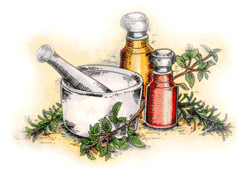 Abdominal Injury Abdominal Injury |
 Achilles Tendon Achilles Tendon |
 Ankle Bone Injury Ankle Bone Injury |
 Ankle Strain Ankle Strain |
 Ankle Synovitis Ankle Synovitis |
 Arm And Shoulder Tenosynovitis Arm And Shoulder Tenosynovitis |
 Arm Contusion, Forearm Arm Contusion, Forearm |
 Arm Contusion, Radial Nerve Arm Contusion, Radial Nerve |
 Arm Contusion, Upper Arm Injury Arm Contusion, Upper Arm Injury |
 Arm Exostosis Arm Exostosis |
 Arm Fracture, Forearm Arm Fracture, Forearm |
 Arm Fracture, Humerus Arm Fracture, Humerus |
 Arm Strain, Biceps Injury Arm Strain, Biceps Injury |
 Arm Strain, Forearm Arm Strain, Forearm |
 Arm Strain, Triceps Arm Strain, Triceps |
 Arm Strain, Upper Arm Arm Strain, Upper Arm |
 Back, Ruptured Disk Injury Back, Ruptured Disk Injury |
 Back Sprain, Lumbo Dorsal Region Injury Back Sprain, Lumbo Dorsal Region Injury |
 Back Sprain, Sacroiliac Region Injury Back Sprain, Sacroiliac Region Injury |
 Back Strain, Dorsal or Thoracic Spine Region Back Strain, Dorsal or Thoracic Spine Region |
 Back Strain, Lumbar Spine Region Back Strain, Lumbar Spine Region |
 Bee Sting Bee Sting |
 Bladder or Urethra Injury Bladder or Urethra Injury |
 Breast Contusion Breast Contusion |
 Breastbone Sprain Breastbone Sprain |
 Burns Burns |
 Buttock Contusion Buttock Contusion |
 Chest Muscle Strain Chest Muscle Strain |
 Collarbone Area Strain, Deltoid Muscle Collarbone Area Strain, Deltoid Muscle |
 Collarbone (Clavicle) Contusion Collarbone (Clavicle) Contusion |
 Collarbone Dislocation - Shoulder Joint Collarbone Dislocation - Shoulder Joint |
 Collarbone Fracture, Outer End Collarbone Fracture, Outer End |
 Collarbone Fracture, Shaft Midportion Collarbone Fracture, Shaft Midportion |
 Corneal Abrasion Corneal Abrasion |
 Dog Bites Dog Bites |
 Ear Injury Ear Injury |
 Elbow Bursitis, Radio-Humeral Elbow Bursitis, Radio-Humeral |
 Elbow Contusion, Ulnar Nerve Elbow Contusion, Ulnar Nerve |
 Elbow Contusion Elbow Contusion |
 Elbow Dislocation Elbow Dislocation |
 Elbow Fracture, Coronoid Process Elbow Fracture, Coronoid Process |
 Elbow Fracture, Epicondyle Elbow Fracture, Epicondyle |
 Elbow Fracture, Lower Humerus Elbow Fracture, Lower Humerus |
 Elbow Fracture, Radius Elbow Fracture, Radius |
 Elbow Fracture, Ulna Elbow Fracture, Ulna |
 Elbow Sprain Elbow Sprain |
 Elbow Strain Elbow Strain |
 Elbow Tendinitis or Epicondylitis Elbow Tendinitis or Epicondylitis |
 Eye Injury Eye Injury |
 Face Contusion Face Contusion |
 Snakebite Snakebite |
 Spider Bites Spider Bites |
 Tick Bites Tick Bites |
|
|
Home :: Collarbone Dislocation At Shoulder Joint
Collarbone Dislocation At Shoulder Joint
An injury in which adjoining bones of the clavicle (collarbone) are displaced from their normal position and no longer touch each other. A minor dislocation is called a subluxation.
BODY PARTS INVOLVED
- Clavicle, sternum (breastbone) and scapula (shoulder blade).
- Ligaments that hold the clavicle to the sternum and the scapula.
- Soft tissue in the injury area, including nerves, periosteum (covering of bone), blood vessels and muscles.
Causes
- Direct fall on the tip of the shoulder.
- Pulling or jerking on the arm.
- Falling on an outstretched hand or flexed elbow (common in football and polo).
- End result of a severe clavicle sprain.
Signs & Symptoms
- Excruciating pain in the collarbone-shoulder area at the time of injury.
- Loss of shoulder function.
- Severe pain when attempting to move the tip of the shoulder.
- Visible deformity if the dislocated bones have locked in the dislocated position. Bones may spontaneously reposition themselves and leave no deformity, but damage is the same.
- Tenderness over the dislocation.
- Swelling and bruising over the injury.
- Numbness or paralysis in the arm below the dislocation caused by pressure on blood vessels or nerves
How is the diagnosis of a shoulder dislocation made?
Diagnosis of a shoulder dislocation is usually quite apparent just by talking to a patient and examining their joint. Patients must be examined to determine if there is any nerve or blood vessel damage. This should be done prior to reduction (repositioning) of the shoulder dislocation. X-rays should be obtained to check for any fracture around the joint, and to determine the pattern of the shoulder dislocation.
Treatment
Follow your doctor's instructions. These instructions are supplemental.
- At home, continue ice massage 3 or 4 times a day for 15 minutes at a time. Fill a large styrofoam cup with water and freeze. Tear a small amount of foam from the top so ice protrudes. Massage firmly over the injured area in a circle about the size of a softball.
- After 24 to 48 hours, apply heat instead of ice, if it feels better. Use heat lamps, hot soaks, hot showers or heating pads.
- Massage gently and often to provide comfort and decrease swelling.
- Wrap the injured shoulder with an elasticized bandage between treatments.
Home Diet
- Drink only water before surgery or manipulation to correct the dislocation. Solid food in your stomach makes vomiting while under general anesthesia more hazardous.
- During recovery, eat a well-balanced diet that includes extra protein, such as meat, fish, poultry, cheese, milk and eggs. Increase fiber and fluid intake to prevent constipation that may result from decreased activity.
Prevention
- Build your overall strength and muscle tone with a conditioning program appropriate for your sport.
- Warm up adequately before physical activity.
- Wear shoulder pads during contact sports to protect the shoulder-clavicle area from injury.
- Avoid contact sports if treatment does not restore a strong, stable shoulder.
back to injuries section
|
|


